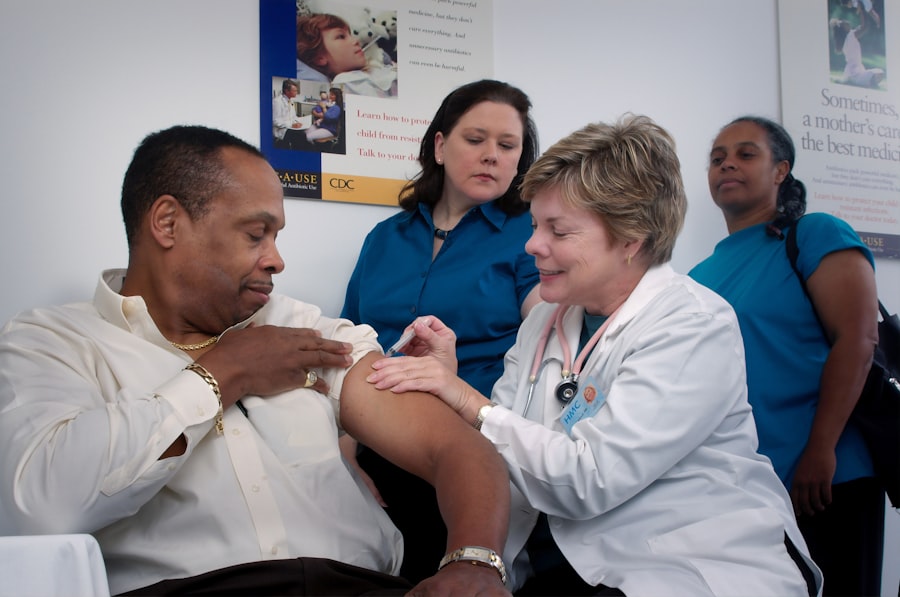In the realm of healthcare, understanding your audience is paramount. Healthcare consumers are not a monolithic group; they encompass a diverse range of individuals with varying needs, preferences, and challenges. To effectively engage with this audience, healthcare marketers must delve into the demographics, psychographics, and behavioral patterns of their target market.
For instance, younger consumers may prioritize digital access to health information and telehealth services, while older adults might seek more traditional forms of communication and in-person consultations. By segmenting the audience based on age, socioeconomic status, health literacy, and specific health conditions, marketers can tailor their messaging to resonate with each group. Moreover, identifying the challenges faced by healthcare consumers is crucial for developing relevant content.
Many individuals grapple with issues such as navigating complex healthcare systems, understanding insurance coverage, and managing chronic conditions. For example, a patient newly diagnosed with diabetes may feel overwhelmed by the plethora of information available online. By conducting surveys, focus groups, or utilizing analytics tools, healthcare organizations can gain insights into the specific pain points of their audience.
This understanding allows for the creation of targeted content that addresses these challenges directly, fostering a sense of trust and reliability between the consumer and the healthcare provider.
Key Takeaways
- Understand healthcare consumers’ needs and challenges to tailor effective content.
- Create valuable, solution-oriented content addressing key healthcare issues.
- Use diverse formats like blogs, videos, infographics, and podcasts to engage audiences.
- Optimize content with SEO and keywords to enhance search engine visibility.
- Ensure compliance with healthcare regulations and ethical standards in all marketing efforts.
Creating Valuable and Relevant Content: Providing Information and Solutions for Healthcare Issues
Creating valuable and relevant content is at the heart of effective healthcare marketing. The primary goal should be to provide information that not only educates but also empowers consumers to make informed decisions about their health. This can take many forms, from articles that explain medical conditions in layman’s terms to guides that help patients navigate treatment options.
For instance, a healthcare organization might publish a comprehensive guide on managing asthma that includes practical tips for daily living, medication management strategies, and information on when to seek emergency care. Such content not only addresses immediate concerns but also builds long-term relationships with consumers by positioning the organization as a reliable source of information. In addition to educational content, it is essential to provide solutions that resonate with the audience’s needs.
This could involve creating resources that help consumers understand their insurance benefits or offering tools for tracking health metrics. For example, a hospital might develop an interactive online tool that allows patients to input their symptoms and receive tailored recommendations for next steps. By focusing on solutions-oriented content, healthcare marketers can enhance consumer engagement and satisfaction, ultimately leading to improved health outcomes.
Leveraging Different Content Formats: Utilizing Blogs, Videos, Infographics, and Podcasts to Reach Healthcare Consumers

The diversity of content formats available today offers healthcare marketers a unique opportunity to engage with consumers in various ways. Blogs remain a staple in content marketing due to their versatility and ease of sharing. They can cover a wide range of topics, from recent medical research findings to personal patient stories that humanize healthcare experiences.
However, as attention spans shorten and visual content becomes increasingly popular, integrating other formats such as videos and infographics is essential. For instance, a short video explaining the importance of vaccinations can be more impactful than a lengthy article, especially when shared on social media platforms where quick consumption is favored. Podcasts have also emerged as a powerful medium for reaching healthcare consumers.
With the rise of mobile technology, many individuals prefer listening to content while commuting or exercising. A healthcare organization could launch a podcast series featuring interviews with medical experts discussing various health topics or sharing patient success stories. This format not only provides valuable information but also fosters a sense of community among listeners who may share similar health concerns.
By leveraging multiple content formats, healthcare marketers can cater to different preferences and learning styles, ensuring that their message reaches a broader audience.
Establishing Thought Leadership: Positioning Your Healthcare Brand as a Trusted Source of Information
| Metric | Description | Target Value | Measurement Frequency |
|---|---|---|---|
| Content Engagement Rate | Percentage of users interacting with thought leadership content (likes, shares, comments) | 15%+ | Monthly |
| Website Traffic from Organic Search | Number of visitors arriving via search engines to thought leadership pages | 10,000+ visits/month | Monthly |
| Backlinks from Authoritative Healthcare Sites | Number of external links from reputable healthcare sources to your content | 50+ backlinks | Quarterly |
| Social Media Followers Growth | Increase in followers on platforms where thought leadership is shared | 10% growth per quarter | Quarterly |
| Newsletter Subscription Rate | Number of new subscribers to healthcare insights newsletter | 500+ new subscribers/month | Monthly |
| Media Mentions | Number of times the brand is cited or featured in healthcare news outlets | 5+ mentions/month | Monthly |
| Expert Webinar Attendance | Number of attendees participating in thought leadership webinars | 200+ attendees per event | Per event |
| Customer Trust Score | Survey-based score measuring trust in brand as a healthcare information source | 80%+ positive rating | Bi-annual |
Establishing thought leadership is crucial for healthcare brands aiming to build credibility and trust within their communities. By positioning themselves as experts in their field, organizations can differentiate themselves from competitors and foster loyalty among consumers. This can be achieved through various strategies, such as publishing research findings, participating in industry conferences, or contributing articles to reputable medical journals.
For example, a hospital that conducts groundbreaking research on cancer treatment could share its findings through press releases and social media campaigns, showcasing its commitment to advancing medical knowledge. Additionally, thought leadership can be cultivated through community engagement initiatives. Hosting free health seminars or workshops allows healthcare organizations to share their expertise while directly interacting with consumers.
These events not only provide valuable information but also create opportunities for networking and relationship-building. By consistently demonstrating knowledge and expertise in relevant areas, healthcare brands can position themselves as trusted sources of information that consumers turn to when seeking guidance on health-related matters.
Incorporating SEO and Keywords: Optimizing Content to Improve Search Engine Visibility and Reach
In an increasingly digital world, incorporating search engine optimization (SEO) strategies into content marketing is essential for improving visibility and reach among healthcare consumers. Effective SEO begins with thorough keyword research to identify the terms and phrases that potential patients are using when searching for health-related information online. For instance, if a healthcare organization specializes in pediatric care, keywords such as “pediatrician near me” or “children’s health tips” should be integrated into website content, blog posts, and other digital materials.
Beyond keyword integration, optimizing content involves ensuring that it is structured in a way that search engines can easily crawl and index it. This includes using appropriate headings, meta descriptions, and alt text for images. Additionally, creating high-quality backlinks from reputable sources can enhance a website’s authority in the eyes of search engines.
By prioritizing SEO best practices, healthcare organizations can improve their chances of appearing at the top of search engine results pages (SERPs), ultimately driving more traffic to their websites and increasing engagement with potential patients.
Utilizing Social Media Platforms: Engaging with Healthcare Consumers and Building Relationships through Content

Social media platforms have revolutionized the way healthcare organizations interact with consumers. These platforms provide an invaluable opportunity for real-time engagement and relationship-building through content sharing. By creating informative posts that address common health concerns or sharing success stories from patients, healthcare brands can foster a sense of community among their followers.
For example, a clinic might use Instagram to share visually appealing infographics about healthy eating habits or post short videos featuring staff discussing preventive care measures. Moreover, social media allows for two-way communication between healthcare providers and consumers. Responding promptly to comments or questions not only demonstrates attentiveness but also builds trust among followers.
Additionally, hosting live Q&A sessions on platforms like Facebook or Instagram can provide an interactive space for consumers to seek advice directly from medical professionals. By leveraging social media effectively, healthcare organizations can enhance their visibility while cultivating meaningful relationships with their audience.
Measuring and Analyzing Content Performance: Using Metrics to Evaluate the Effectiveness of Content Marketing Strategies
To ensure the success of content marketing efforts in healthcare, it is essential to measure and analyze performance metrics regularly. Key performance indicators (KPIs) such as website traffic, engagement rates, conversion rates, and social media interactions provide valuable insights into how well content resonates with the target audience. For instance, if a blog post about managing anxiety receives significantly higher traffic than other posts, it may indicate a strong interest in mental health topics among consumers.
Utilizing analytics tools such as Google Analytics or social media insights can help healthcare marketers track these metrics effectively. By analyzing data over time, organizations can identify trends and adjust their content strategies accordingly. For example, if video content consistently garners higher engagement than written articles, it may be beneficial to allocate more resources toward video production.
Regularly measuring content performance not only informs future strategies but also ensures that marketing efforts align with consumer needs and preferences.
Adhering to Regulatory Guidelines: Ensuring Compliance with Healthcare Laws and Ethical Standards in Content Marketing
In the highly regulated field of healthcare, adhering to legal guidelines and ethical standards is paramount when developing content marketing strategies. Organizations must navigate complex regulations such as the Health Insurance Portability and Accountability Act (HIPAA), which governs patient privacy and data security. Ensuring compliance means being cautious about sharing patient stories or testimonials without proper consent and avoiding any misleading claims about treatments or services.
Additionally, ethical considerations extend beyond legal compliance; they encompass the responsibility to provide accurate and evidence-based information to consumers. Misinformation in healthcare can have serious consequences for patient safety and public health. Therefore, it is crucial for healthcare marketers to base their content on credible sources and peer-reviewed research while clearly citing these references when applicable.
By prioritizing compliance with regulatory guidelines and ethical standards, healthcare organizations can build trust with their audience while safeguarding their reputation in an increasingly scrutinized industry.



